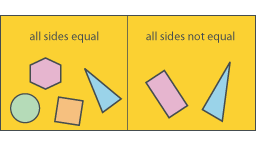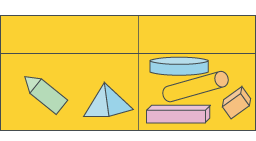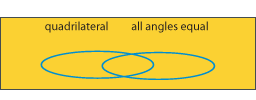Teaching guidance
This teaching guidance document suggests some of the key vocabulary, models, images and practical equipment that children should experience and be able to use. It also includes some teaching tips to provide a few starting points for ways of supporting children with this area of mathematics.
 Can I sort shapes, choosing my own criteria? - teaching guidance | 169KB
Can I sort shapes, choosing my own criteria? - teaching guidance | 169KB 
Consolidation and practice
These resources are to support children in guided or independent work.
Opportunities to use and apply
Possible contexts include:
- shape problems and puzzles, e.g. Sort this set of shapes into two groups, deciding upon your own criterion. Now can you think of another criterion that would have exactly the same shapes together in the same groups?
- data handling, e.g. Find a 3-D shape for each cell of this Carroll diagram. Now make a new diagram with your own labels.
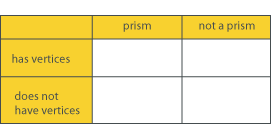
- art/design technology, e.g. Which regular 2-D shapes can be used as tiles to cover a surface completely? Why? Design a tiling pattern.

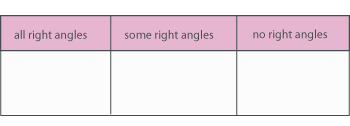
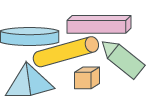
 Understanding shape
Understanding shape

